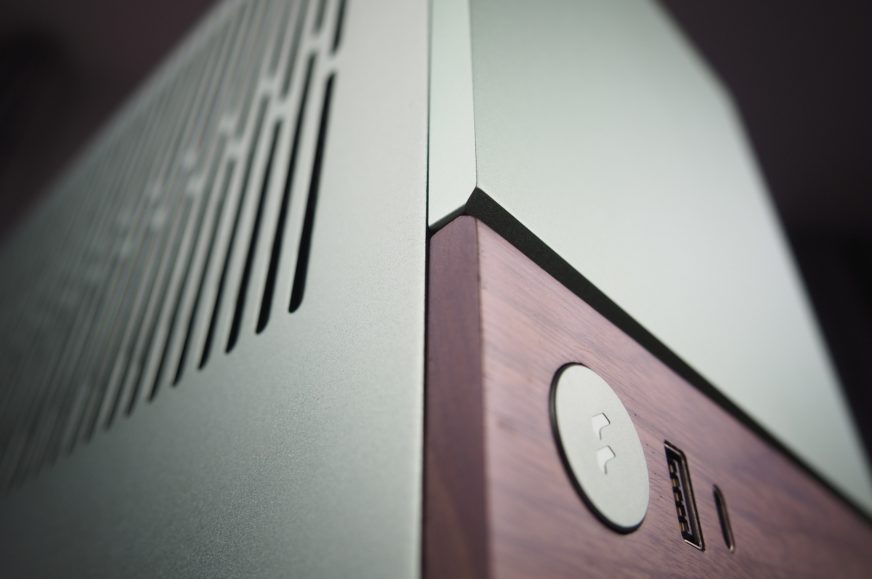Conclusion
Well, here we have something from Fractal Design to test again, something that goes beyond the usual formulas. The Terra case falls into the SFF (small form factor) category, but unlike many similarly sized solutions, there is room for a large graphics card. This makes the Terra an attractive small case for a gaming PC or a workstation reliant on the power of the GPU. But all this is traditionally discussed in more detail.
Conclusion
Test results for such specific and small cases will vary considerably. This is also the case when comparing the Ridge and Terra cases. The newcomer did lag behind significantly, which is partly due to the vents. At higher speeds, these also increase the noise level of the case significantly. When the side panel was moved away from the CPU cooler fan, the noise level was reduced by 3.5 dBA to 38.5 dBA at the 42 dBA level tested.
But the worse test results are compensated by the high level of build quality of the case. Carefully machined aluminium and walnut wood make up the exterior, which makes the case captivating at first glance. The thickness of the panels, both outer and inner, is more than double what is usual for sheet metal cases. Inside, there is an elegantly designed tray with the ability to adapt to a graphics card or a CPU cooler.
Fitting the components was relatively easy and would have been easier if I had followed the procedures in the detailed manual. The only thing you don’t learn there is how to efficiently solve the cable management. You have to figure that out on your own. But it is greatly simplified by the ground floor of the case with the grille holes. Combined with the Velcro pull-tabs, you can tailor your cable management to suit your needs.
With its unique modern look, Terra is an elegant case but also a decorative accessory in the home. The high build quality also makes it one of the premium cases. The vents along almost the entire exterior give it the space not to need system fans, albeit at the cost of weaker cooling performance. The perforation is also its shortcoming, for which we gave the case the rating “Approved”.
English translation and edit by Jozef Dudáš
| Fractal Design Terra |
| + Precision manufacturing |
| + Brushed aluminium side panels |
| + Use of walnut wood |
| + Sufficient space for a larger graphics card |
| + Unique look |
| - Grille in the side panel significantly increases the noise level |
| - Only two USB connectors |
- Contents
- Exterior
- Interior layout
- Mounting
- Test methodology
- CPU and GPU cooling tests
- Motherboard cooling tests
- SSD cooling tests
- Conclusion












